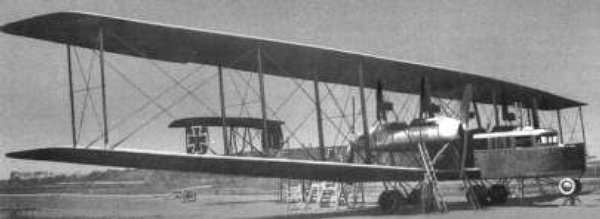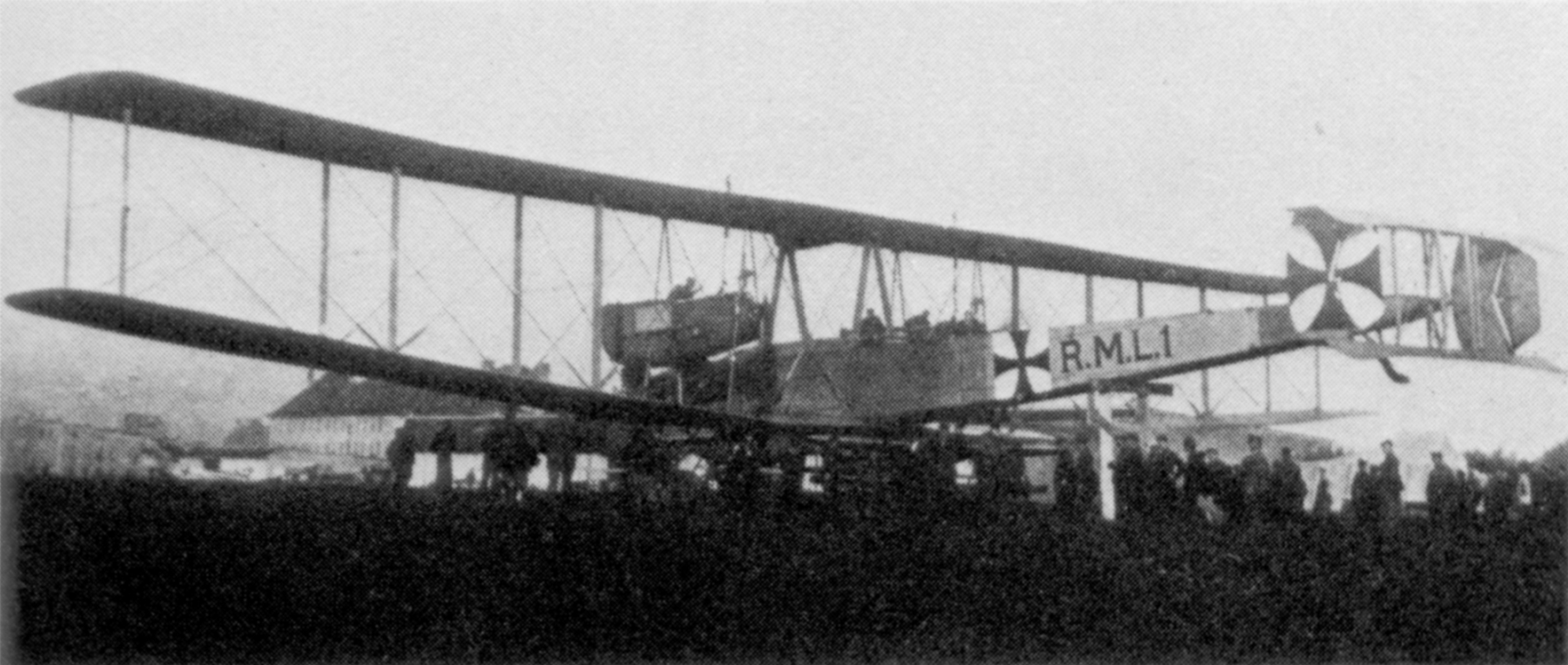|
Zeppelin-Staaken
Zeppelin-Staaken (sometimes Zeppelin Werke Staaken or Zeppelin-Werke GmbH), was a German aircraft manufacturer originally located in Gotha. The company built the largest aircraft of World War I, the "Riesenflugzeug" (giant aircraft).Mondey, 1978. p 309. Aircraft built *Zeppelin-Staaken Riesenflugzeuge ** Zeppelin-Staaken R.IV **Zeppelin-Staaken R.V ** Zeppelin-Staaken R.VI ** Zeppelin-Staaken R.VII **Zeppelin-Staaken 8301 ** Zeppelin-Staaken R.XIV **Zeppelin-Staaken R.XV ** Zeppelin-Staaken R.XVI **Zeppelin-Staaken E-4/20 See also *Riesenflugzeug A ''Riesenflugzeug'' (plural ''Riesenflugzeuge'', German for "giant aircraft"), sometimes colloquially referred to in English as an R-plane, was any member of a class of large World War I German bombers, possessing at least three aircraft engines, ... References Citations Bibliography * External links Zeppelin-Staaken R.III German Military Aviation Service {{Idflieg R-class designations ... [...More Info...] [...Related Items...] OR: [Wikipedia] [Google] [Baidu] |
Zeppelin-Staaken Riesenflugzeuge
The Zeppelin-Staaken Riesenflugzeuge () were a series of very large bomber aircraft - ''Riesenflugzeuge'' ("giant aircraft"), usually powered by four or more engines, designed and built in Germany from 1915 to 1919.Haddow, G.W. & Grosz, Peter M. ''The German Giants, The Story of the R-planes 1914–1919''. London. Putnam. (1962, 3rd ed. 1988). Design and development The first Zeppelin-Staaken R-planes were made by Ferdinand von Zeppelin, aided by Robert Bosch GmbH (engineers), the V.G.O. I, ''(Versuchsbau Gotha-Ost)'', was built at Gothaer Waggonfabrik due to lack of facilities at the Zeppelin works, hence the V.G.O. Designator. This large aircraft set the seal on what was to come, with a wingspan. The initial "V.G.O."-series of Zeppelin-Staaken "Giants" were very large aircraft by the standards of 1915, and its four-bay interplane-strut per side wing structure, planform shape (having slightly swept-back leading edges) and general wing structural dimensions would be used, almo ... [...More Info...] [...Related Items...] OR: [Wikipedia] [Google] [Baidu] |
Riesenflugzeug
A ''Riesenflugzeug'' (plural ''Riesenflugzeuge'', German for "giant aircraft"), sometimes colloquially referred to in English as an R-plane, was any member of a class of large World War I German bombers, possessing at least three aircraft engines, although usually four or more engines. These were large multi-engine aircraft capable of flying several hours with larger bomb loads than the smaller ''Grossflugzeug'' bombers such as the Gotha G.V. Some of the earliest ''Riesenflugzeuge'' were given G-type designations before being redesignated, but a major distinction was that the requirements for the R-type specified that the engines had to be serviceable in flight. As a result, designs fell into two groups - those with the engines mounted centrally inside the fuselage using gearboxes and driveshafts to transfer the power to propellers mounted between the wings, and those with conventional powerplant installations mounted in large nacelles or the nose of the aircraft where engineers ... [...More Info...] [...Related Items...] OR: [Wikipedia] [Google] [Baidu] |
Zeppelin-Staaken R
Zeppelin-Staaken (sometimes Zeppelin Werke Staaken or Zeppelin-Werke GmbH), was a German aircraft manufacturer originally located in Gotha. The company built the largest aircraft of World War I, the "Riesenflugzeug" (giant aircraft).Mondey, 1978. p 309. Aircraft built *Zeppelin-Staaken Riesenflugzeuge ** Zeppelin-Staaken R.IV ** Zeppelin-Staaken R.V ** Zeppelin-Staaken R.VI ** Zeppelin-Staaken R.VII **Zeppelin-Staaken 8301 ** Zeppelin-Staaken R.XIV **Zeppelin-Staaken R.XV ** Zeppelin-Staaken R.XVI **Zeppelin-Staaken E-4/20 See also *Riesenflugzeug A ''Riesenflugzeug'' (plural ''Riesenflugzeuge'', German for "giant aircraft"), sometimes colloquially referred to in English as an R-plane, was any member of a class of large World War I German bombers, possessing at least three aircraft engines, ... References Citations Bibliography * External links Zeppelin-Staaken R.III German Military Aviation Service {{Idflieg R-class designations ... [...More Info...] [...Related Items...] OR: [Wikipedia] [Google] [Baidu] |
Zeppelin-Staaken 8301
Zeppelin-Staaken (sometimes Zeppelin Werke Staaken or Zeppelin-Werke GmbH), was a German aircraft manufacturer originally located in Gotha. The company built the largest aircraft of World War I, the "Riesenflugzeug" (giant aircraft).Mondey, 1978. p 309. Aircraft built *Zeppelin-Staaken Riesenflugzeuge ** Zeppelin-Staaken R.IV ** Zeppelin-Staaken R.V ** Zeppelin-Staaken R.VI ** Zeppelin-Staaken R.VII ** Zeppelin-Staaken 8301 ** Zeppelin-Staaken R.XIV ** Zeppelin-Staaken R.XV ** Zeppelin-Staaken R.XVI ** Zeppelin-Staaken E-4/20 See also *Riesenflugzeug A ''Riesenflugzeug'' (plural ''Riesenflugzeuge'', German for "giant aircraft"), sometimes colloquially referred to in English as an R-plane, was any member of a class of large World War I German bombers, possessing at least three aircraft engine ... References Citations Bibliography * External links Zeppelin-Staaken R.III German Military Aviation Service {{Idflieg R-class designations ... [...More Info...] [...Related Items...] OR: [Wikipedia] [Google] [Baidu] |
Zeppelin-Staaken E-4/20
The Zeppelin-Staaken E-4/20 was a revolutionary four-engine all-metal passenger monoplane designed in 1917 by Adolf Rohrbach and completed in 1919 at the Zeppelin-Staaken works outside Berlin, Germany. The E-4/20 was the first four-engine, all-metal stressed skin heavier-than-air airliner built. Design and development At a time when most aircraft were small, single-engine biplanes made of wood and canvas, the E-4 was a large (102-foot wingspan), all-metal, four-engine, stress-skinned, semi-monocoque, cantilevered-wing monoplane, with an enclosed cockpit, and accommodation for 18 passengers plus a crew of five, including two pilots, a radio operator, an engineer and a steward, as well as radio-telegraph communications, a toilet, a galley and separate baggage and mail storage. With a maximum speed of 143 mph, cruising speed of , a range of about , and a fully loaded weight of , it outperformed most other airliners of its day. The E-4 included numerous innovations, includi ... [...More Info...] [...Related Items...] OR: [Wikipedia] [Google] [Baidu] |
Aircraft Manufacturer
An aerospace manufacturer is a company or individual involved in the various aspects of designing, building, testing, selling, and maintaining aircraft, aircraft parts, missiles, rockets, or spacecraft. Aerospace is a high technology industry. The aircraft industry is the industry supporting aviation by building aircraft and manufacturing aircraft parts for their maintenance. This includes aircraft and parts used for civil aviation and military aviation. Most production is done pursuant to type certificates and Defense Standards issued by a government body. This term has been largely subsumed by the more encompassing term: " aerospace industry". Market In 2015 the aircraft production was worth US$180.3 Billion: 61% airliners, 14% business and general aviation, 12% Military aircraft, 10% military rotary wing and 3% civil rotary wing; while their MRO was worth $135.1 Bn or $ Bn combined. The global aerospace industry was worth $838 billion in 2017: Aircraft & Eng ... [...More Info...] [...Related Items...] OR: [Wikipedia] [Google] [Baidu] |
Gotha (town)
Gotha () is the fifth-largest city in Thuringia, Germany, west of Erfurt and east of Eisenach with a population of 44,000. The city is the capital of the Gotha (district), district of Gotha and was also a residence of the Ernestine House of Wettin, Wettins from 1640 until the end of monarchy in Germany in 1918. The House of Saxe-Coburg and Gotha originating here spawned many European rulers, including the royal houses of the United Kingdom, Belgium, Portugal (until 1910) and Bulgaria (until 1946). In the Middle Ages, Gotha was a rich trading town on the trade route ''Via Regia'' and between 1650 and 1850, Gotha saw a cultural heyday as a centre of sciences and arts, fostered by the dukes of Saxe-Gotha. The first duke, Ernest I, Duke of Saxe-Gotha, Ernest the Pious, was famous for his wise rule. In the 18th century, the ''Almanach de Gotha'' was first published in the city. The publisher Justus Perthes (publishing company), Justus Perthes and the encyclopedist Joseph Meyer (publ ... [...More Info...] [...Related Items...] OR: [Wikipedia] [Google] [Baidu] |
World War I
World War I (28 July 1914 11 November 1918), often abbreviated as WWI, was one of the deadliest global conflicts in history. Belligerents included much of Europe, the Russian Empire, the United States, and the Ottoman Empire, with fighting occurring throughout Europe, the Middle East, Africa, the Pacific, and parts of Asia. An estimated 9 million soldiers were killed in combat, plus another 23 million wounded, while 5 million civilians died as a result of military action, hunger, and disease. Millions more died in genocides within the Ottoman Empire and in the 1918 influenza pandemic, which was exacerbated by the movement of combatants during the war. Prior to 1914, the European great powers were divided between the Triple Entente (comprising France, Russia, and Britain) and the Triple Alliance (containing Germany, Austria-Hungary, and Italy). Tensions in the Balkans came to a head on 28 June 1914, following the assassination of Archduke Franz Ferdi ... [...More Info...] [...Related Items...] OR: [Wikipedia] [Google] [Baidu] |



.jpg)
